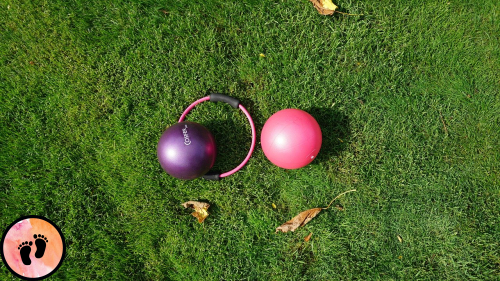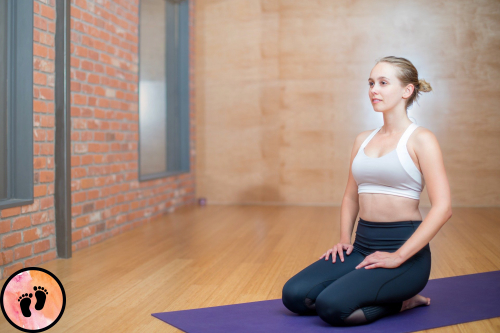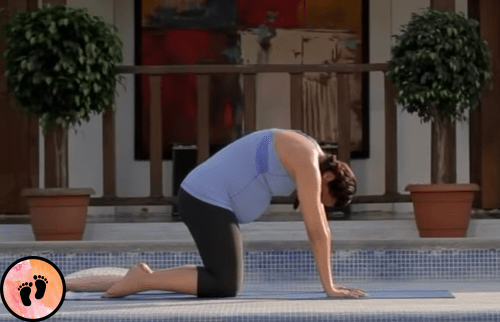Prenatal Pilates for Pregnancy
What is Pilates?
Pilates trains your body to be strong, balanced and flexible. It focuses on a lot of series of movements and positions that help to improve your strength and coordination. Deep breathing and relaxation are important factors in controlling how you do the exercises.
 Prenatal Pilates for Pregnancy
Prenatal Pilates for PregnancyThese exercises engage your tummy, pelvic floor muscles and back muscles, which are all key to good posture, balance and strength. It helps your back and pelvis to be supported. Strengthening your muscles will lead to a stable core. Pilates helps to build on this strength through a series of controlled movements that won’t put your body under strain.
What is Pregnancy Pilates?
During and after pregnancy, your tummy, back and pelvic floor muscles are the areas that can cause problems. However, exercising pilates can strengthen them. So it's a great exercise to do when you're pregnant, and some of the exercises needs to be modified as you get nearer your due date.
Advantages of practising regular pilates
1. Strengthen your tummy muscles, which equips your body better to cope with the strains caused by the weight of your growing baby.
2. Reduce back pain, by exercising the tummy muscles that stabilise your back and pelvis. Strengthening these muscles can help you to lower your back or pelvic pain.
3. Strengthen your pelvic floor, which will help to support your bowel, bladder and womb as your baby grows and moves down. Leaking small amounts of pee when you cough or sneeze will be prevented. It will also help you to push your baby out when you give birth.
4. Improve balance, as you may feel a little clumsier, or that your balance isn’t as good as usual, in pregnancy. Pilates exercises can also strengthen your core and may make you more stable while you walk as your bump grows.
Is it safe?
Pilates is the perfect low-impact pregnancy workout regime to carry out. It boosts flexibility and balance and prevents back pain by strengthening your pelvic floor and core muscles, which support your spine.
Pilates involves doing a series of controlled movements and can be enjoyed throughout your pregnancy as the moves are very easy to modify around your belly or any pain you may have.
Few important things to remember while doing pilates :
1. Be careful not to overdo anything, so don’t over-exert yourself or stretch too much. On reaching 16 weeks of pregnancy, avoid exercises where you lie on your back.
2. Make sure you look for a specific pregnancy class or a one-to-one teacher who is trained to work with pregnant women and tell them how many weeks pregnant you are. They should be able to adapt the exercises to suit your changing body at each stage of your pregnancy.
3. If you already do non-pregnancy Pilates classes, tell your teacher you’re pregnant. Your teacher should be trained to work with women during pregnancy or should suggest a pregnancy class that would be better for you.
Best exercises and how to perform
Let’s look at nine exercises that are safe and effective for you.
1. Pelvic floor Muscle exercise
By performing these exercises pelvic floor muscles are strengthened. Complications during and after delivery can be prevented.
 Pelvic Floor exercises
Pelvic Floor exercisesSit on your knees with legs together and buttocks on the heels. You can also choose to lie down with your head bent forward and knees bent. Try imagining yourself trying to control the urge to urinate. You will feel the muscles squeeze. Hold this position for ten seconds, and then gradually relax. Repeat it ten times.
2. Deep Tummy strengthening
Increases back support.
Slightly bent your knees while lying on one side. Breathe in and breathe out. And try to pull in your belly towards the spine. At the same time, try squeezing the pelvic floor muscles. Continue in this position for about ten seconds. Let rest your tummy muscles gently and repeat it ten times.
3. Pelvic tilts
Strengthens your lower back and pelvis. This exercise mostly involves lying in a supine position. Therefore, do not try this without consulting your physical trainer.
Lie on your back with your head and shoulders elevated on a pillow, and knees bent. Breathe in gently. While breathing out, you must press your lower back down using the abdominal muscles. Your pelvis tilts, and tailbone rises when you do this. Hold for about five to ten seconds. Repeat five to ten times.
4. Upper back stretch
Improves your posture.
Sit gently in a cross-legged position with your back in an upright position and place your hands behind the head. Breathe in slowly. While breathing out, you must draw in your tummy and extend the back as you look up at the ceiling. Take another breath by squeezing your shoulders and continue to the starting position. Repeat it five to ten times.
5. The Cat Stretch
Strengthens back muscles.
 The Cat Stretch
The Cat StretchBegin by getting on all four hands and knees – keep your hands under the shoulders and knees beneath the hips. Breathe in as you relax your tummy. While breathing out, draw the tummy inwards, gently arch your back upwards and bend your head down and look at the tummy. Breathe in again by gently going back to the starting pose of the exercise.
Repeat the same for 5-10 times.
6. Thigh stretch
Strengthens abdominal muscles, lower back, hips, and buttocks.
Kneel down on a carpet or mat with your knees hip-width apart, and contract the abs. Lean back while breathing in and squeeze your butt and raise your arms parallel to the floor with palms facing down. Breathe out while you lower your arms down. Resume to the starting position.
7. The sword
This exercise improves balance and strengthens abdominal muscles, back, and legs.
Stand with your feet wide apart, wider than your hips. Bend your knees and move your right hand towards the left knee. Raise your right hand upwards to the right, like taking a sword out from the hip belt. Keep looking at your hand while doing so. Repeat the same with the other hand.
8. Sword arm
Improves balance, strengthens abs, arms, back, and hips.
Kneel with your right knee and place both hands on the floor. Stretch your left leg with abs pulled in and hips facing upwards. Breathe in as you raise the left hand to the sky and look up towards your hand. Breathe out by lowering your hand to the starting position. Switch to the left side and repeat.
9. Wagging the tail
Improves flexibility, stability and strengthens the lower back and abs.
Start on all fours and keep your wrists aligned to the shoulders. Suck in your belly, lift one knee and make circular movements with the leg. Repeat the same with another leg. Repeat three to four times.
Recent Posts
Homemade Pregnancy Test
How to Prevent Pregnancy Stretch Marks
Is It Safe to Eat Ice Cream During Pregnancy
Breast Pain in Pregnancy
7 Tips to getting pregnant faster
COMMON INFECTIONS DURING PREGNANCY
Pregnancy Diet: Apples during Pregnancy
Advertisement
Duis leo. Donec orci lectus, aliquam ut, faucibus non
Join Our Community of Expecting Parents Today!
Subscribe to get updated on latest and relevant pregnancy-related details